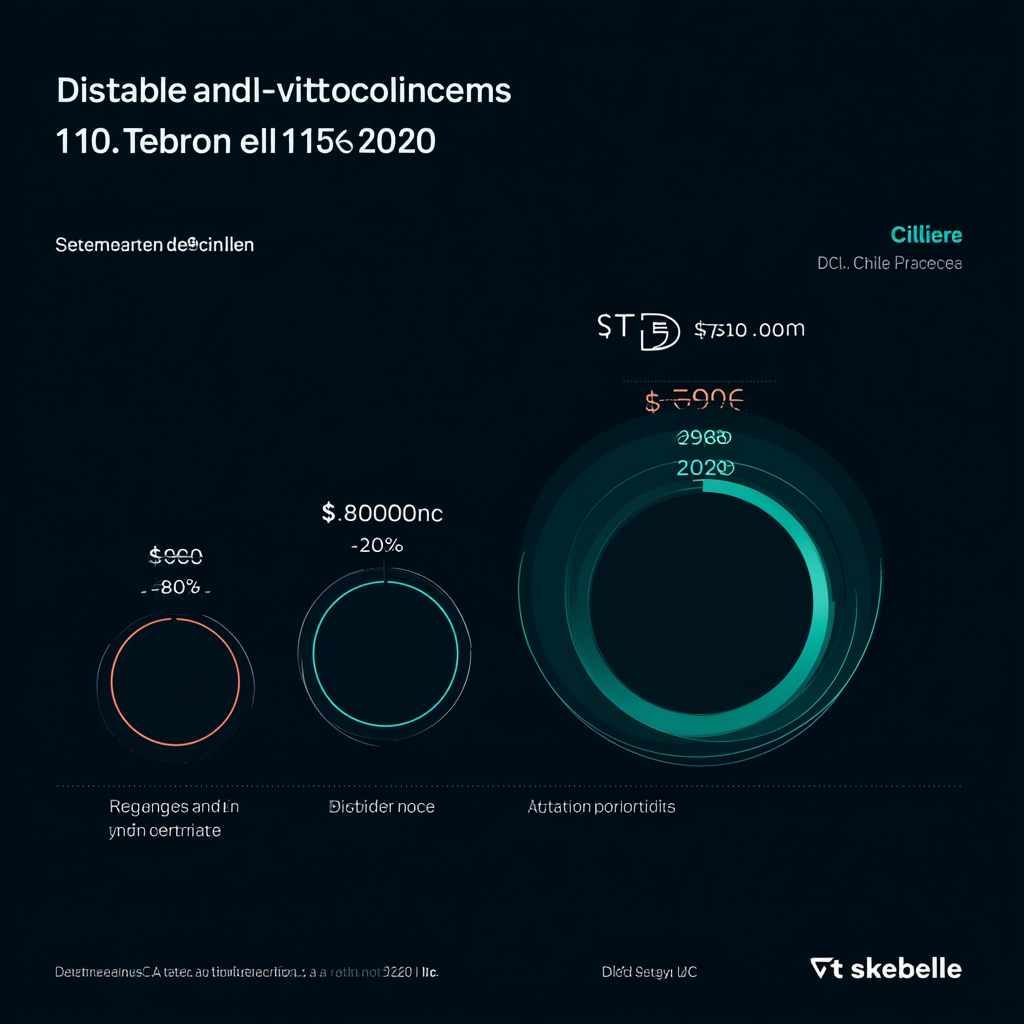
Stablecoins: $1T in Payments by 2030, Fueled by DeFi Surge
Stablecoins: The New Titans of Finance Set to Soar to $1 Trillion by 2030
Stablecoins are no longer just buzzwords circulating in blockchain enthusiast circles; they are evolving into formidable players in the global payment arena. With forecasts predicting a jaw-dropping $1 trillion in payment volume by 2030, the stablecoin market is surging forward, set to leave traditional payment methods in its dust. This jest of growth—from a humble $260 billion current standing—is undeniably thrilling (and a tad bit unnerving) for anyone glued to the pulse of finance, technology, and regulation.
Now, if you've been nestled comfortably in your traditional banking chair thinking this is just some passing trend, I urge you to adjust your seating. The waves made by stablecoins have already reshaped the ocean of financial systems, and they show no signs of receding. With tech-savvy generations eager to navigate a future steeped in decentralization, you've got to marvel at how fast this ship is sailing. Interviews with industry insiders, research from credible institutions, and a hint of intuition all suggest we’re just beginning to see the tip of the iceberg—an iceberg heading straight toward $1 trillion territory.
The Skyrocketing Trajectory
Let’s get our hands dirty with some numbers, shall we? Various authoritative reports paint quite the picture—a wild painting with brushstrokes that scream growth. The stablecoin market could surge anywhere between $1.6 trillion and $3.7 trillion by 2030, if all goes according to plan. As a digital asset analyst, I can’t help but wonder how many more eyes will light up at this clockwork acceleration as institutional adoption becomes the norm rather than the exception.
Tether (USDT) and Circle (USDC)—two of the major titans—currently command a whopping 85% of the market share. What does this mean for us, the curious onlookers? A tightening grip on the financial world by a few players could very well create a new-age oligopoly, and let’s not forget that oligopolies, just like street performers in tourist spots, can both dazzle and disillusion.
But beyond sheer monetary size, stablecoins are about to become the engines driving transactions in the burgeoning DeFi sector. Imagine being able to utilize your digital currency for instant payments via smart contracts—sounds like the plot of an intriguing future thriller, right? It’s happening now, like it or not.
The Magic Behind the Growth
You might ask, what’s fueling this spectacular rise? Let’s break it down:
-
Accessibility: Stablecoins are the financial equivalent of that all-day breakfast diner—the kind that never shuts its doors! They offer real-time transactions around the clock, ensuring that night owls and early birds alike find their financial cravings satisfied.
-
Global Reach: Gone are the days when cross-border payments were haunted by high fees and slow transfers. Stablecoins work like a magic spell, making geographical barriers vanish. They promise to turn the traditional payments game on its head, and that’s no small feat.
-
Marriage with DeFi: As if that’s not enough, let’s sprinkle in decentralized finance for good measure. Stablecoins are now entwined in the fabric of DeFi, acting as the linchpin for lending, borrowing, yield farming, and a suite of other financial wonders. The only catch? You have to love living without intermediaries.
-
The Institutional Stamp of Approval: As they say, if you can’t beat them, join them. Even big financial institutions are starting to integrate stablecoins into their operations. From liquidity management to crypto trading, lenders are quickly covering their bets, reinforcing the notion that stablecoins aren’t just a passing fad—they could define the next generation of finance.
The Game of Influencers: Corporations and Governments
Stablecoins are not only playthings for tech startups; they’re catching the eye of corporate giants and regulatory authorities as well.
Corporate stablecoins are on the horizon, folks! Imagine Amazon or Walmart rolling out their own branded stablecoins by 2027. Picture a closed loop akin to a digital amusement park where you pay only with the park’s currency. Fees evaporate, and the transactions within the ecosystem flow like a perfectly brewed cup of coffee.
But don’t forget the political theater. The GENIUS Act is stirring in the U.S., signaling a desire for a regulated and controlled stablecoin ecosystem. Think of it as the government throwing down the gauntlet, aiming to mix innovation with stability. The thought of the U.S. Treasury backing stablecoins to bolster sovereign strength is a spicy twist to the tale—rivaling simply price dynamics and entering the fields of national interest.
The Dark Clouds: Challenges Ahead
But let us not be blissfully ignorant; several risks lurk in the shadows of this financial renaissance.
-
Regulation: Just as we saw with the rise and fall of many a tech giant, heavy-handed regulations could squash enthusiasm faster than a kid crushing soda cans. Countries wary of losing their monetary sovereignty might unleash the hounds on these digital currencies.
-
Market Confidence: Imagine a stablecoin losing its peg. It could cause a cataclysmic chain reaction of uncertainty. We’re not just talking minor panic; we could witness a reality check that sets the market back years.
-
Competition from CBDCs: Central Bank Digital Currencies on the rise might pose an undeniable threat. How do stablecoins compete with a digital currency endorsed (and regulated) by the very powers that govern our economy? It’s a fiery cooking pot of contention waiting to bubble overtime.
DeFi: The Speed Demon of the Payment World
Decentralized finance isn’t just an accessory to stablecoins; it’s the nitrous oxide racing through the vehicle's veins, propelling the entire ecosystem forward. DeFi’s protocols allow for lightning-fast transactions, automated payments through smart contracts, and even layered financial operations without the traditional red tape.
Cue the small and medium enterprises who are jumping into this fast-paced pool, leveraging stablecoins for their liquidity needs. The banking system’s hesitance to adapt to the millennial speed of commerce is like trying to keep up with a speeding train; it’s stale by comparison. The crypto firms’ client bases are shifting, with payment segments dwarfing traditional investment ones, indicating a massive paradigm shift.
A Glimpse into Tomorrow
As we peer into the horizon, several potential developments become evident:
-
Revolutionized Payments: That $1 trillion forecast isn’t just a number; it’s a sign of seismic shifts in how we conduct business and personal transactions globally.
-
Corporate Crises and New Horizons: Expect branded stablecoins to create ‘closed environments’ where newcomers to retail finance may find themselves blissfully protected from traditional banking fees.
-
Global Monetary Strategy: Governments may utilize stablecoins for monetary advantages, enhancing financial sovereignty while further embedding themselves in the web of innovation.
-
Clearer Regulations: With well-structured frameworks, institutional trust will flourish, paving the way for mainstreaming stablecoins.
-
Surge in DeFi Engagement: An increase in DeFi adoption could very well result in stablecoins not just being used for payments, but as key components in newly woven financial tapestries.
For those of you keeping close watch, stablecoins are metamorphosing from mere speculative treasures into essential monetary tools tailored for a futuristic landscape. It's an exhilarating juncture for the curious and courageous alike, inviting us to explore, experiment, and embrace the reality of a rapidly evolving financial environment.
Connected and curious minds, prepare yourselves! The story of stablecoins is still being written, and you don’t want to be left on the sidelines, wondering how you missed the future.
Want to stay up to date with the latest news on neural networks and automation? Subscribe to our Telegram channel: @channel_neirotoken

